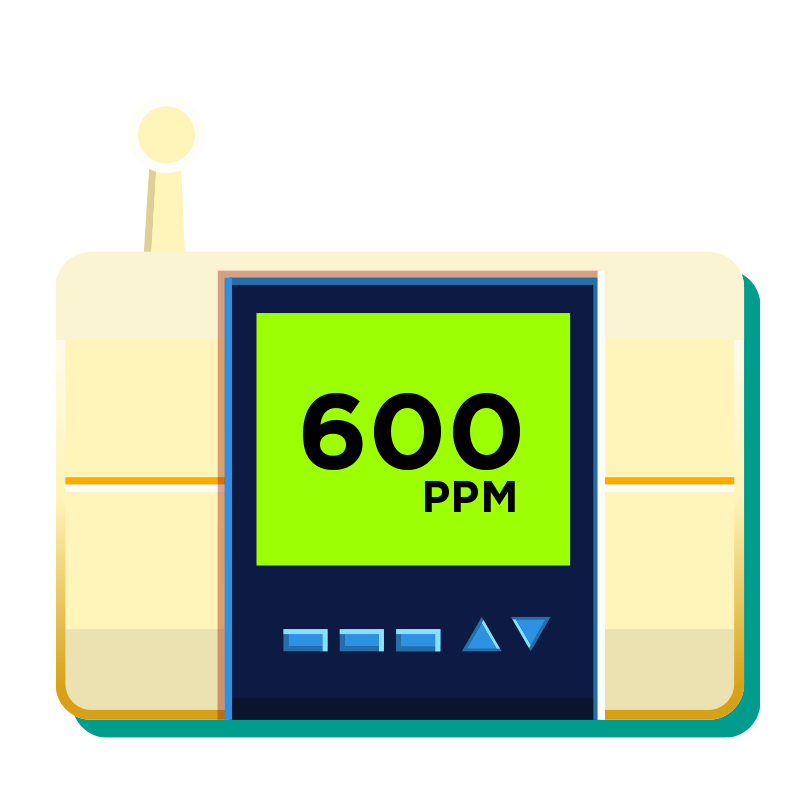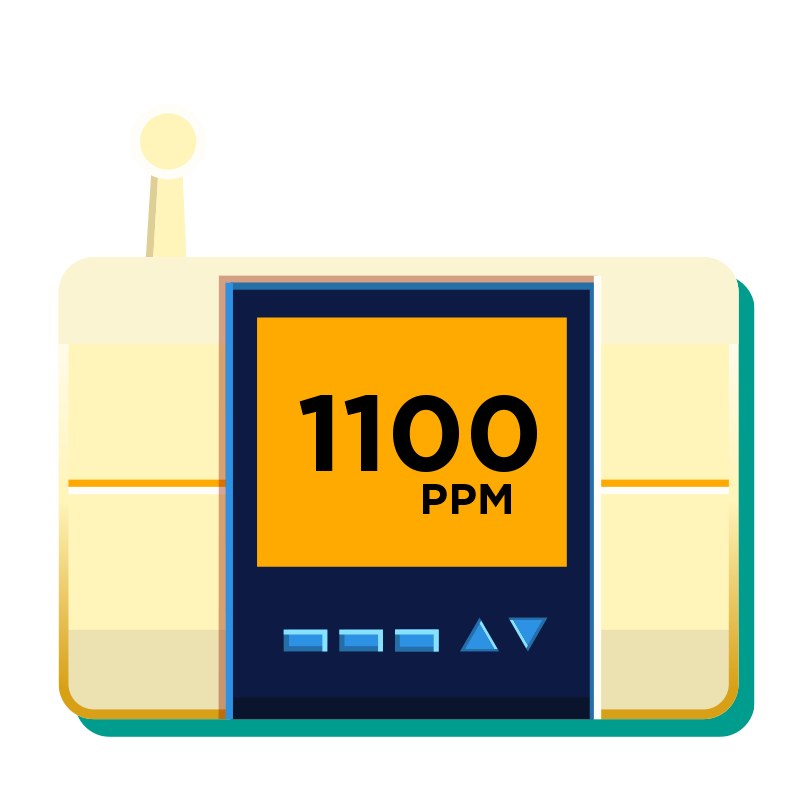As part of the California Schools Healthy Air, Plumbing, and Efficiency (CalSHAPE) Program, schools throughout California have installed carbon dioxide (CO₂) sensors in classrooms to monitor ventilation.
Why Measure CO₂?
CO₂ is a natural part of the air we breathe, produced by people as they exhale. The unit of measurement for CO₂ is parts per million (ppm). Typical outdoor air contains around 400 ppm of CO₂. In occupied buildings, CO₂ can accumulate based on several factors:
- Room size and occupancy – More people means higher CO₂ levels.
- Activity levels – Movement and talking increase CO₂ generation.
- Ventilation effectiveness – Ventilation systems bring in outside air that dilutes CO₂ generated by people. Insufficient ventilation leads to higher CO₂ readings.
CO₂ levels fluctuate throughout the day as students arrive, leave, and participate in activities. Tracking CO₂ helps assess ventilation system performance.


Why This Matters
Good indoor air quality supports:
✅ Better student focus and academic performance
✅ Improved respiratory health
✅ Increased student attendance
Research shows that increased ventilation in schools is linked to improved test scores and lower illness rates. CO₂ sensors provide a simple but powerful tool to maintain a healthy learning environment.
How Do I Read My CO₂ Monitor?
The CalSHAPE program has installed multiple types of CO₂ sensors. To find specific instructions for the CO₂ monitor installed in your classroom, visit our CO₂ Sensor Guide:
This guide will show each type of monitor used in the program and explain how to interpret its readings.


What Do the CO₂ Readings Mean?
Your CO₂ sensor provides real-time data about classroom air quality. The most useful time to read the sensor is when the classroom has been fully occupied for at least one hour. We recommend the following guidelines for interpreting the level of CO₂ in your classroom:
- Below 800 ppm → Good ventilation: Air is being refreshed regularly with outside air.
- 800 – 1,100 ppm → Acceptable ventilation: Ventilation is adequate under most conditions.
- Above 1,100 ppm → Action needed: If CO₂ levels exceed this threshold more than once a week, schools must improve ventilation by working with qualified HVAC personnel to adjust systems. Opening windows and doors when it is safe to do so can also help increase ventilation.
What Can Teachers Do?
Teachers help keep classrooms well-ventilated. Here’s how you can help:
- Check CO₂ levels regularly and, when above 1100 ppm, open windows and doors when it is safe to do so. Do not unplug or disable your CO₂ monitor.
- Report high CO₂ levels to facilities staff so adjustments can be made.
- Keep the HVAC fan on during occupied hours to bring in fresh air.
- Use a portable air cleaner (if available) to further improve air quality.

Learn More
- Note: CO₂ is not the same as CO (carbon monoxide). CO₂ is a natural part of the air we exhale and is not toxic at typical indoor levels. While CO is a dangerous gas at even low concentrations, CO₂ only becomes a safety concern at much higher levels (5,000 ppm is the occupational exposure limit set by OSHA for an 8-hour period). Classroom sensors in the CalSHAPE program only monitor CO₂ for ventilation purposes, not for safety hazards like CO.

